All images courtesy of Chipster PR
The former Lion, Dio, and Whitesnake guitarist dishes on his evolved approach and why this version of the Dead Daisies is the strongest yet.
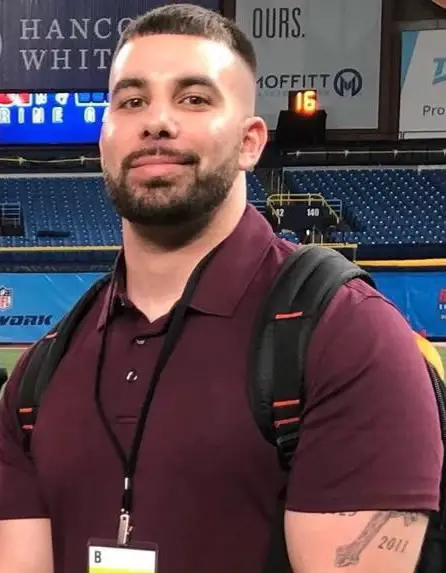
By Andrew DiCecco
adicecco5@gmail.com
Doug Aldrich’s scorching licks have been featured in a variety of songs and albums throughout his extensive and winding journey in the music industry. Over the years, the North Carolina-bred six-stringer shared stages with the likes of David Coverdale, Tommy Aldridge, Simon Wright, and the late Ronnie James Dio, but has seemingly found his calling with the rock supergroup Dead Daisies, in which he’s been a member since 2016.
Earlier this fall, the Dead Daisies released their sixth studio album, Radiance, to widespread acclaim. In addition to showcasing Aldrich on lead guitar, the multi-layered 10-track rocker also features Glenn Hughes (vocals, bass), David Lowy (rhythm guitar), and Brian Tichy (drums).
In our Zoom interview, Doug and I discussed the making of Radiance, his evolution as a guitar player, and his formative days in Whitesnake.
Last month, The Dead Daisies released their sixth studio album, Radiance, which I think is the strongest to date. What was the sonic blueprint for this album?
We were writing heavy grooves, Glenn [Hughes] was doing his thing with melodies and lyrics, and we just wrote some music. We didn’t talk about it so much, except that we wanted to write simple songs and, in the classic rock vein, kind of ’70s-based. Then we went in the studio with [producer] Ben Grosse, and Ben brought a lot sonically; he had a sound in his head that he was going for. We didn’t talk about the album being heavier; it just ended up heavier. But I agree with you; it’s my favorite album that we’ve done so far.
Why do you feel that way?
I like the songs. I feel like the sound of the album is really thick and cool, and I think we just gelled more on this with regard to the songwriting. Another reason is Brian Tichy coming back to the band is a huge thing. He brings it on this album. You listen to some of the stuff, like the outro section of “Not Human,” where Brian’s just going off. And his grooves are just so thick. It’s just killer the way he plays.
Brian ideally complements the dynamic; collectively, the band seems to be firing on all cylinders.
Yeah, I agree. It’s mainly because of [Brian]. He is also a guitar player, so when I’m doing certain things, I know he knows what I’m doing. And he knows how to play off that really well. Also, when it comes to – say, for example – we’re working on a song and all in the studio together playing simultaneously. Say we’re playing something … Brian will go, “Do you hear it more with an open hi-hat eight-note feel? Or do you hear it more closed hi-hat quarter-note? And what about the kick pattern? What are you guys hearing?” Immediately, he starts – in a very musical way – experimenting a little bit with the groove, and suddenly, it’ll be like, “That feels good.” A lot of drummers don’t necessarily go that deep; they’ll come in and play whatever was on the drum machine or demo. Brian loves to experiment and try things, and it really helps the songs.
You mentioned Ben [Grosse] wearing the production hat on Radiance. As someone who has worked with Ben previously, what is it about his style or methods that influenced your decision to retain his services?
Part of it was because we were really happy with Holy Ground, how he did it, and how he worked. The other part was that the three of us are in L.A., so it just made sense to record it here. It was just a lot of reasons why it made sense to work with Ben again. Like I said when you asked about the sound, he has this thing in his head like a movie director has the shot in his head that he’s trying to capture. In Ben’s head, he’s got all these sounds, melodies, and layers that he wants to try and experiment with. So, we did a lot of that. And when it gets to the mix, he kind of figures, “Okay, I’m gonna put this guitar in instead of this one,” and shapes the sound like that.
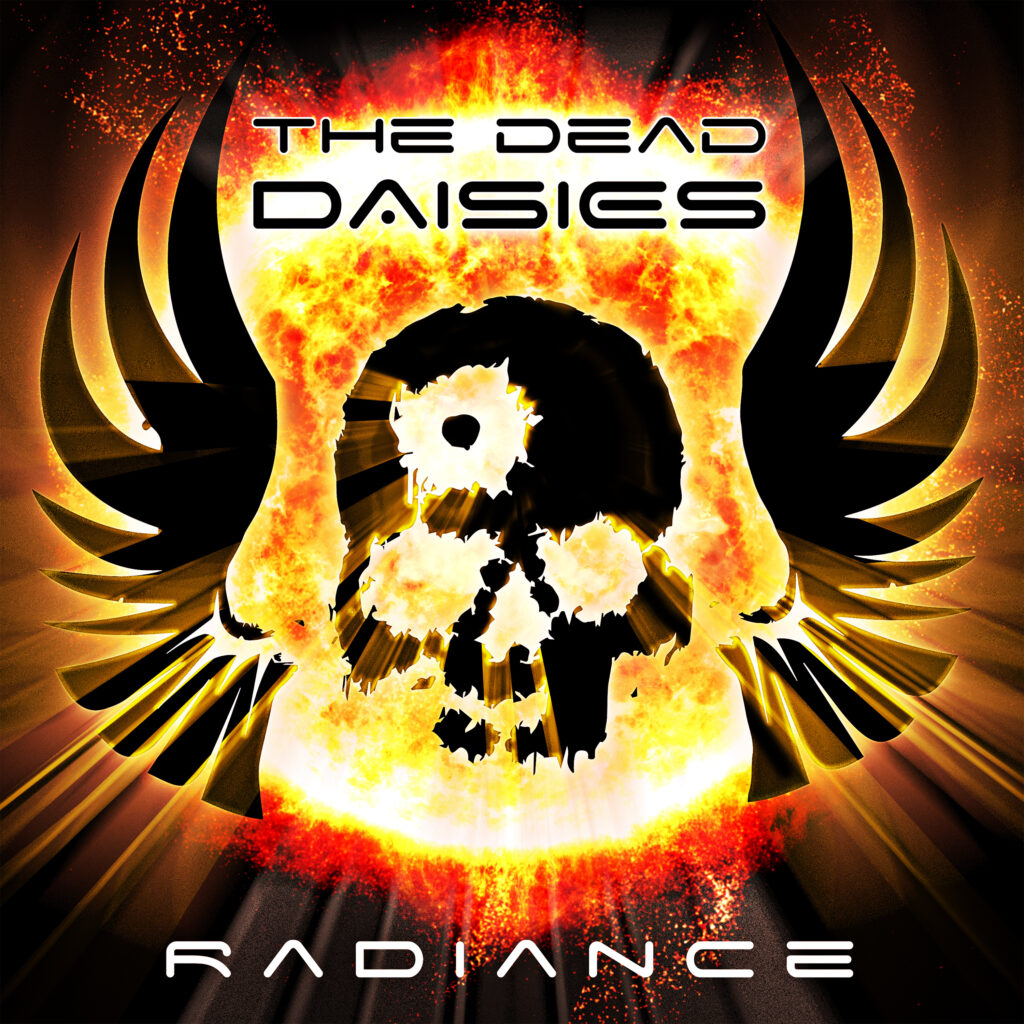
All images courtesy of Chipster PR
To my ears, it sounds like there is a very distinct theme throughout this album.
It’s a very positive message. The way Glenn writes lyrics and everything is very positive regarding the lyrical content and stuff. For me, the music gives me a feeling; it gives me strength, or it’ll give me energy, or it’ll chill me out. That’s what the music does, but the lyrics are the thing that paints a picture. It’s very positive what [Glenn’s] writing.
I’m really digging “Shine On.” How did that track come together?
That started as a riff that David Lowy had on the tour bus. We were on tour last year, and David, a lot of times, he’ll just come up with a riff, and he’ll start playing it, and no one is thinking about it. But when I hear stuff like that, I’ll take my cell phone and record it. If you don’t do that, people will forget what they did. And if you ask them, “Hey, can you play that again?” inevitably, it will not be the same. So, I record it. We had a bunch of songs written already, but David said, “Hey, did you check the cell phone?” And I go, “No, but I know there are a few things on there. I’ll check it out.” And I found that riff of his, which led to the whole song becoming a thing. I really love it, too; I think it’s a cool, rockin’ track. Glenn’s melody is nice on it. It was a band piece.
What gear was used during the recording sessions?
Mainly, my Goldtop Les Paul is the main guitar you’re hearing. And on David’s side, he’s got a P-90 pickup and an Epiphone Dwight; I’m not sure what year it is; maybe it’s ’59 or something. He uses this old Epiphone to record with, and it sounds killer. But as far as my stuff goes, it’s mainly a Marshall head that I still take on tour with me because it’s killer; it’s a great amp. It’s from 1979. I should mention that John Suhr builds my pickups in my Les Paul; it’s a signature pickup that’s insane. If you have a guitar and you’re thinking about changing the pickup, and it’s a humbucker, people should check out John Suhr because he’s the master. He’s a master creator of music, in the way that Jim Marshall was. As far as pedals go, I didn’t use them too much in the studio. I used a wah a little bit here and there, but it was mainly straight into the amp in the studio. We used some other tones and flavors; I used a ’56 Les Paul Junior on some stuff that kind of gave it a spanky tone, like the beginning of “Hypnotize Yourself.” I used a Strat on a couple of things for clean stuff. But for the heavier parts, always just my Les Paul.
What excites you the most about this particular album in terms of its release?
Making an album now, it’s a creative thing, and it’s really fun when you’re creating because you’re doing something secretly that no one’s hearing. But when it comes out, that allows you to promote the album by playing live, and that’s where it gets really fun. Playing live is what it’s all about. It used to be that touring was to support album sales, but now it’s the other way around; you put out an album so you can tour. So, I’m excited that we have these dates in the U.S., and we’ve got dates in the U.K. later in December, and we’ll see what happens next year as far as touring goes. It’s only been eighteen months since the last album came out. So, it’s good; people have heard that album, they liked it, and now they can get onto this one.
Have you given any thought to what the setlist will look like?
We’re gonna be playing four songs off Radiance; we’re going to be doing four songs off of Holy Ground; we’re gonna be doing a few of the staple songs that the Dead Daises have been playing for a long time, and we’ll probably do a couple of Deep Purple songs for Glenn. We were already playing “Radiance” and “Shine On” in Europe. It was awesome to play those songs live. Then we’re gonna add “Hypnotize Yourself” because that’s the latest single. The next single is called “Face Your Fear,” and that will also be live. So, those four songs we’ll be playing live.
What measurable changes have you seen in your approach to the guitar over the years?
I think it’s more about the feel now than ever before. There are some times when, in the past, I might have worked hard to get things the way I wanted them in my head, but realizing now that it would have been maybe more effective if it had a little bit more rawness to it. Trying not to perfect something so much and just letting it rip is where my head is now. Less is more when it comes to writing riffs. Solos, I’m trying to get more melodic; utilize more melody within the solo opportunities – stuff like that. Before, I’d think about technique and what I can pull off that’s going to be impressive. It’s not that I don’t care, because I do, but I also wanna write what’s suitable for the song. So, in a song like “Radiance,” you’ll notice the solo has a little bit of a slide guitar at the beginning of that solo. It’s a very simple solo, but it fits the song’s vibe. You could come out all guns blazing, but I felt it fit well in the chorus, which was very melodic. It just felt like it wanted to float into that solo with the slide part instead of coming in all guns blazing.

All images courtesy of Chipster PR
That’s interesting. So, at what point in your career did you begin focusing on the melodic aspect of soloing?
I mean, it’s always been there to an extent. I remember, even back in my first band, I would try to find melodies, but I always wanted to have the solo be an exciting part of the song. I think somewhere around Dio, there were a couple of solos – a track I recorded with Ronnie called “Throwaway Children ” – and that solo has a relaxed feel to it and a melodic aspect that I was proud of. Then later, songs with Whitesnake, like “Forever More,” had a theme to them. There was still some technique involved – I would call it fireworks – it had some fireworks to it, but it had a theme. So, it’s been there, but now I’m trying to find the most potent melodies I can.
How have you grown from a songwriting standpoint?
Well, it’s different with everybody that I write with. When I was writing with Jimmy Bain for Ronnie, that was one way. When I had written for my projects, that was a little different. When I joined the Dead Daisies, we were all doing everything together. Like, we didn’t bring a finished song in, per se. We would sit down with acoustic guitars, jam through people’s ideas, and try to develop each person’s ideas a little bit. Then, little by little, we’d get in a room and start to play through it. When Glenn joined the band, he said, “Hey, I’ve got some music that I wanna present.” And I knew that he was a very astute and talented songwriter, so I decided, “Okay, maybe this is a situation now where I should bring in some more completed ideas.”
So, that’s how I did it when Glenn joined; I just started to think, “What would Glenn like to play? What kind of songs could we do that we haven’t been doing in the past?” And I would bang out a few more full-blown demos and present those to Glenn, and Glenn would give his ideas to me, and then we’d work on them together. But the main thing about songwriting that David Coverdale always told me is: You can never have too many hooks. You have to go for solid choruses, riffs, or intense moments that hook people in. So, I don’t plan on doing it, but I realize when there is one, “Okay, that’s good. I should probably repeat that in the song.” If it’s a good hook, repeat it two or three times, whether it’s a chorus or a verse. There was a song on the last album where the solo section was a breather in between the choruses; it was a song called “Like No Other” on Holy Ground. It’s a hook in itself that helps keep the music fresh.
When you joined Whitesnake in 2003, did David allow you creative freedom?
He didn’t at the beginning. He wanted to play the hits on a couple of tours and started the band back up. I had gone and filled in with Dio in 2005 on some stuff – I went back with Dio – and David said, “Look, make sure you come back home. Don’t stay with Ronnie.” And I just told him right then, “Look, if we’re gonna move this band forward, we gotta come up with some brand new Whitesnake music.” So, he said, “I don’t know when it’s gonna be, but you and I will be in the studio at some point. I can see it.” And I just took that as, “Okay, I’ll start writing,” and I’d start presenting David with music here and there, and he started to gravitate towards it and invited me up to write with him in 2006. I guess it was 2007, we had a great run of songwriting sessions, and we put together an album called “Good to be Bad.” It was just in the beginning he didn’t really – I think he was burnt of the music industry as a whole – and once we started putting out albums, he started getting back into it, I guess.
Describe the collaborative process between you and David that was born out of those four songs on the live album, Live… in the Shadow of the Blues, and subsequently took off from there.
Those four were like the beginning. That was in 2006. That’s the thing that’s different about working with David; it was David and I sitting there, and we’d come up with an idea, and we’d program a drum machine, and I’d play bass on it and guitar, and he would sing on it. These songs were pretty much complete; the demos were really good. At some point, I’m sure he’ll release them. Now with the Dead Daisies, we did do some demos, but it’s just for reference; we’re not trying to make them fully developed because we don’t wanna get boxed in on what we’re gonna do. So, we’ll have some very rough demos, and then we’ll get in the studio together and play live together. That’s really important. I think what makes this Radiance album as strong as it can be is playing together; when Brian’s playing the beat, Glenn, David, and I are playing off of him. It’s a different flavor than if you cut the drums in New York, send the tracks out to L.A., and then record guitars, like how sometimes people have to do it these days. It’s a luxury, and it’s awesome that we can do it together in the same room.
What’s fascinating about the Dead Daisies is that it feels like the band is just now finding its stride. Why does this incarnation work so well together?
I think that the way that David Lowy structured the whole thing, people being able to collaborate and keep it fresh–is nice. We were doing great with John Corabi, which was cool, but John wanted to go off and do some other stuff. Glenn comes in, we take a left turn, and we come up with a slightly different sound that still has flavors of the original Dead Daisies that David Lowy started. But it allows us to utilize new people, which is a good lineup.
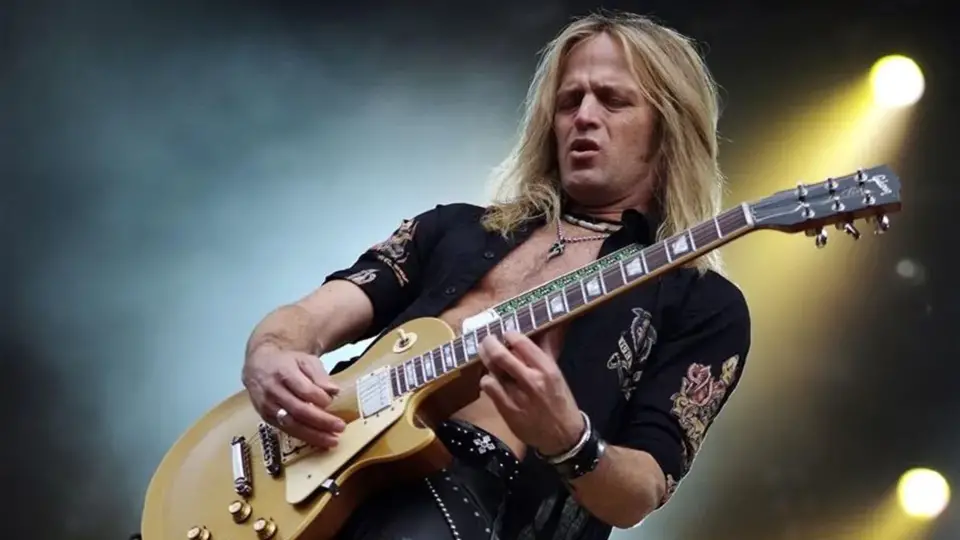
All images courtesy of Chipster PR
– Andrew DiCecco (@ADiCeccoNFL) is a contributor for vwmusicrocks.com and may be reached at adicecco5@gmail.com
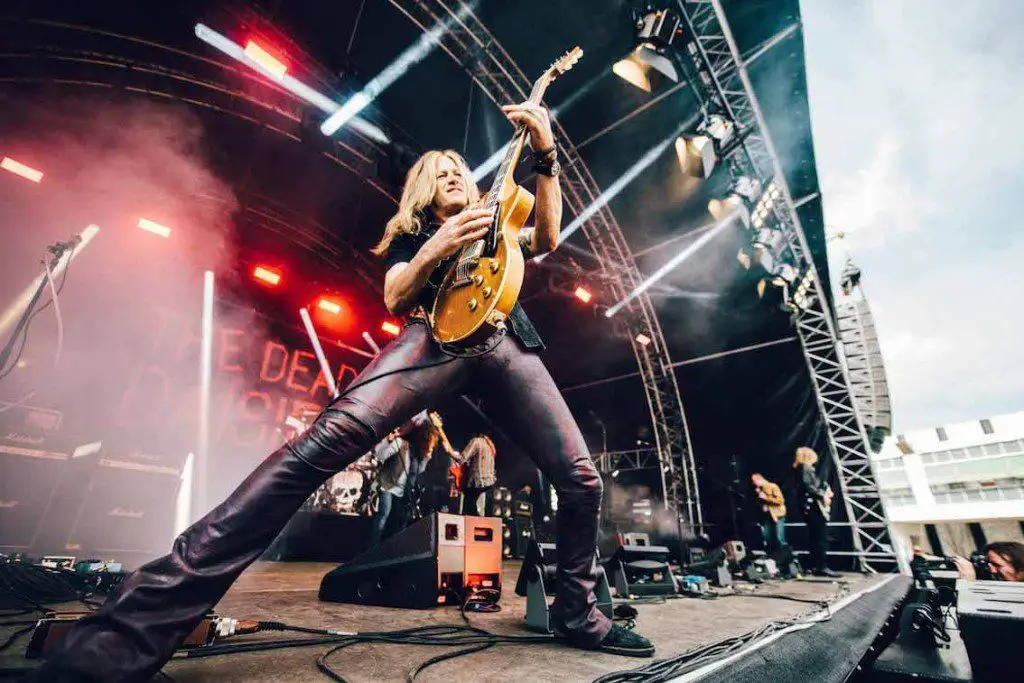
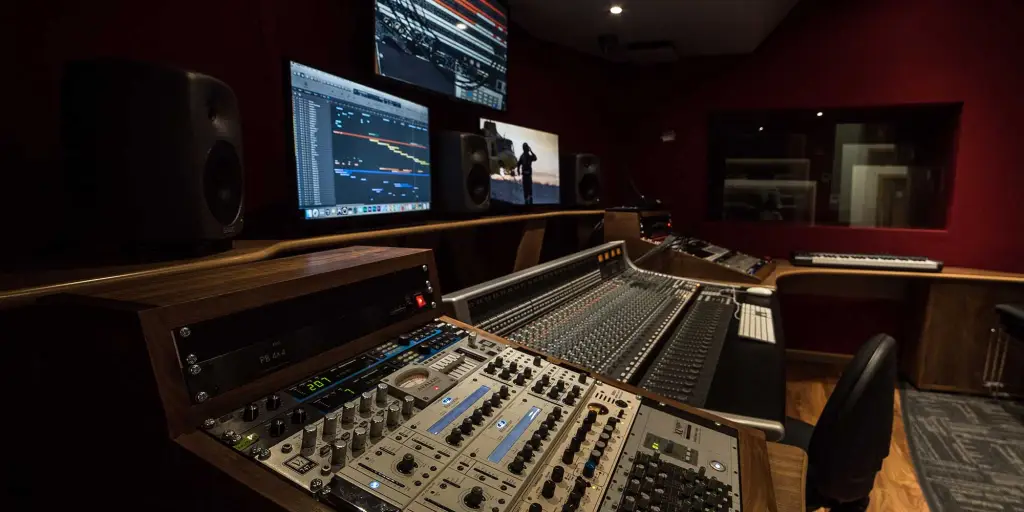

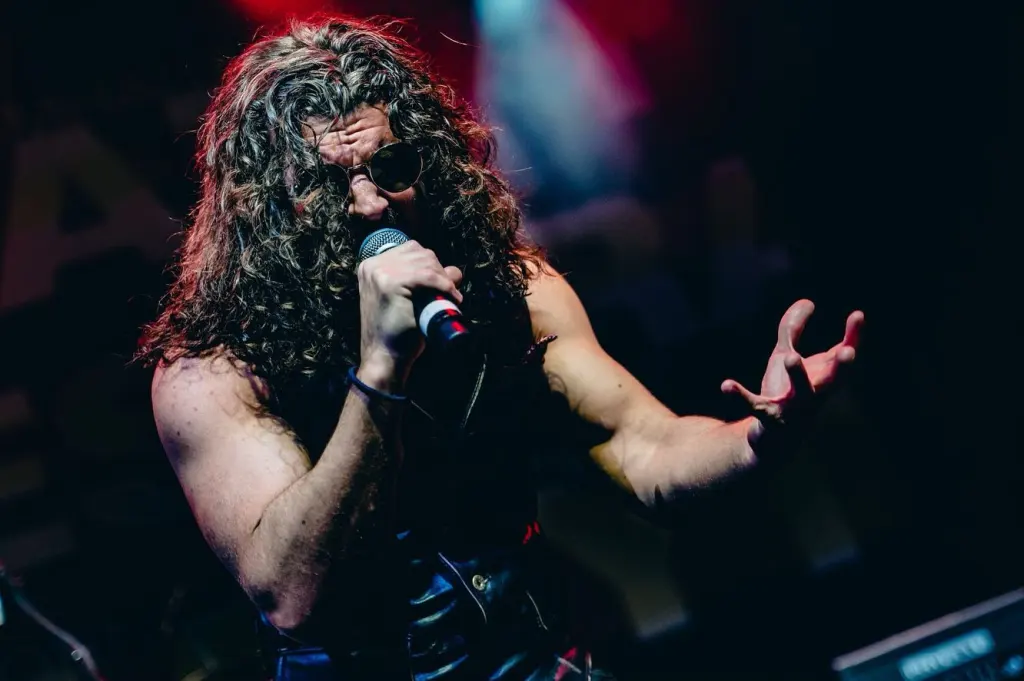
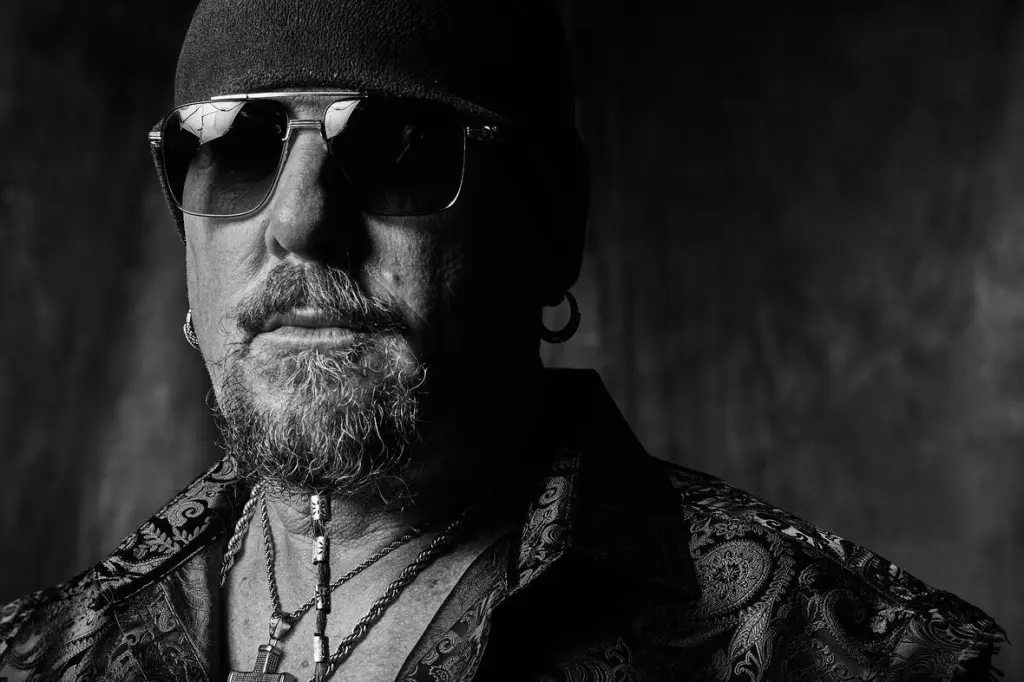
Leave a Reply